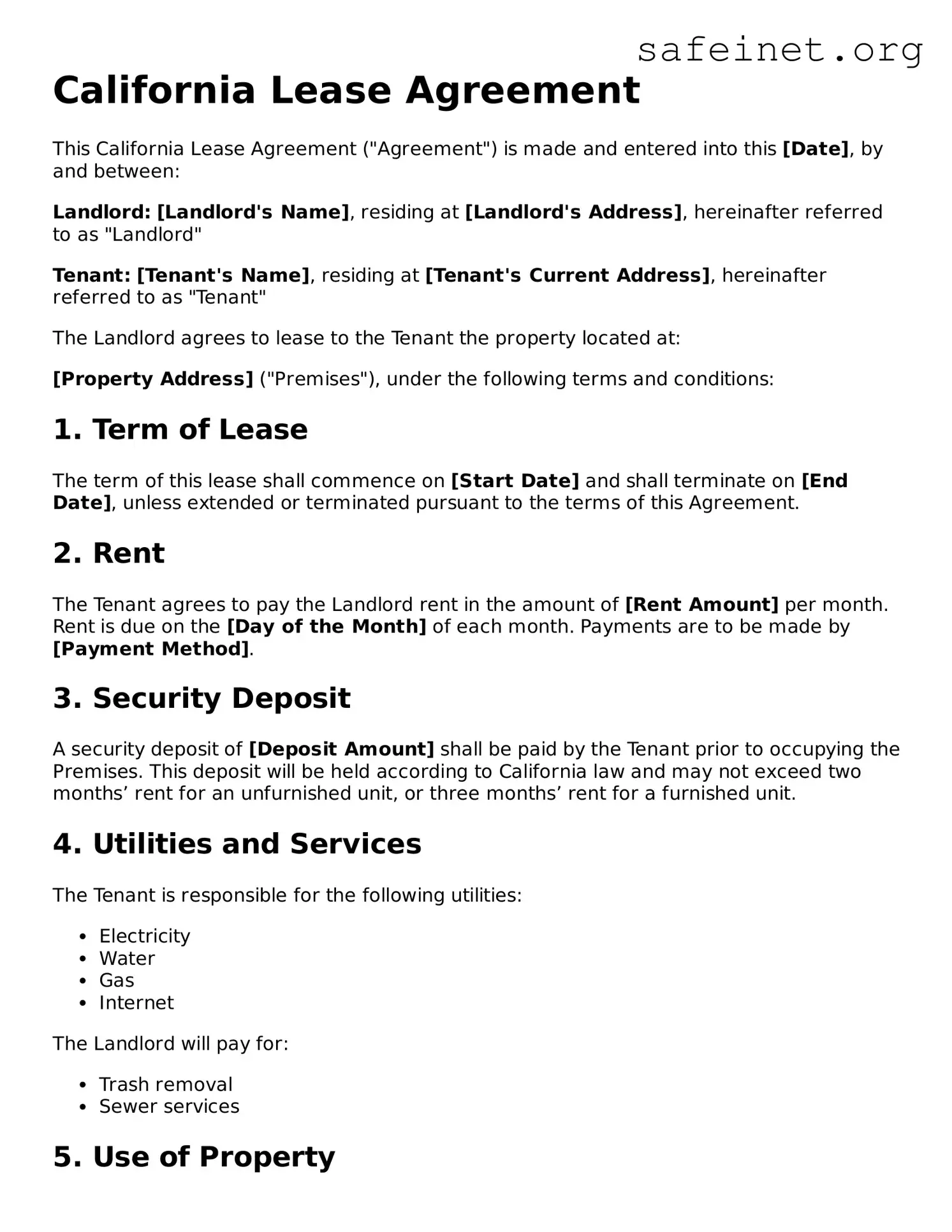California Lease Agreement
This California Lease Agreement ("Agreement") is made and entered into this [Date], by and between:
Landlord: [Landlord's Name], residing at [Landlord's Address], hereinafter referred to as "Landlord"
Tenant: [Tenant's Name], residing at [Tenant's Current Address], hereinafter referred to as "Tenant"
The Landlord agrees to lease to the Tenant the property located at:
[Property Address] ("Premises"), under the following terms and conditions:
1. Term of Lease
The term of this lease shall commence on [Start Date] and shall terminate on [End Date], unless extended or terminated pursuant to the terms of this Agreement.
2. Rent
The Tenant agrees to pay the Landlord rent in the amount of [Rent Amount] per month. Rent is due on the [Day of the Month] of each month. Payments are to be made by [Payment Method].
3. Security Deposit
A security deposit of [Deposit Amount] shall be paid by the Tenant prior to occupying the Premises. This deposit will be held according to California law and may not exceed two months’ rent for an unfurnished unit, or three months’ rent for a furnished unit.
4. Utilities and Services
The Tenant is responsible for the following utilities:
- Electricity
- Water
- Gas
- Internet
The Landlord will pay for:
- Trash removal
- Sewer services
5. Use of Property
The Premises shall be used and occupied solely as a residential dwelling and for no other purpose without the prior written consent of the Landlord.
6. Maintenance and Repairs
The Tenant agrees to keep the Premises clean and in good condition. Any required repairs shall be addressed promptly. The Tenant must notify the Landlord of any maintenance issues that arise.
7. Termination
Either party may terminate this lease agreement by providing written notice to the other party at least [Notice Period] days prior to the desired termination date.
8. Governing Law
This Agreement shall be governed by the laws of the State of California.
9. Additional Terms
Any additional terms or conditions may be set forth here:
[Additional Terms]
IN WITNESS WHEREOF, the parties hereto have executed this Lease Agreement as of the day and year first above written.
Landlord Signature: ___________________________
Tenant Signature: ____________________________
Date: ___________________
